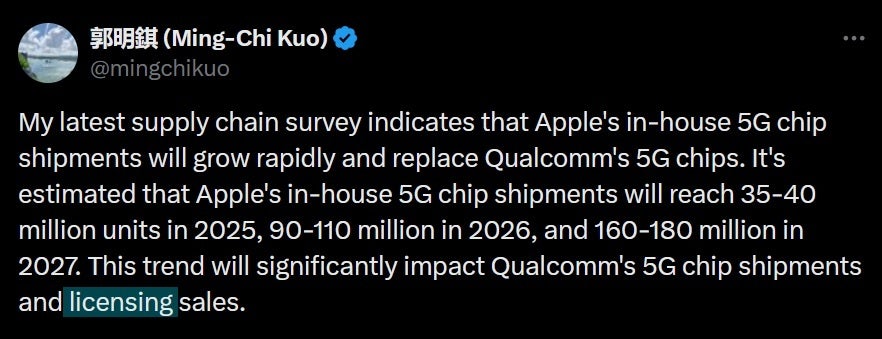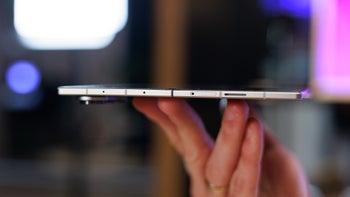Starting in 2027, Apple could be taking a big gamble with the iPhone

It has been a long road for Apple in its attempt to create the tech giant's own in-house 5G modem chips for the iPhone. Along the way, it asked Intel to produce a 5G modem chip for smartphones, faced off against Qualcomm in court several times, settled with Qualcomm during opening arguments in a lawsuit against Qualcomm, and bought Intel's 5G modem unit for $1 billion. Then, while it was working to develop its own in-house 5G modem chips, Apple had some setbacks both performance-wise and patent-wise.
Things were going so poorly for Apple that at one time, during the course of developing its in-house 5G modem chip, the component reportedly took up half the internal space of an iPhone! Obviously this was not going to work and Apple was forced to sign a deal with Qualcomm that keeps them receiving Qualcomm's Snapdragon 5G modem chips through 2026.
Just yesterday, TF International's reliable Apple analyst Ming-Chi Kuo updated the situation with a tweet stating that his latest survey of the supply chain revealed that shipments of Apple's 5G modem chips will grow rapidly and eventually Apple's 5G modem chips will fully replace Qualcomm's Snapdragon 5G modem chips. This is a pretty risky move on Apple's part because Qualcomm's Snapdragon 5G modem chips have a great reputation even inside Apple. And if you were a Pixel 6 Pro user (as I was) you know the pitfalls of using a phone with a 5G modem that is problematic.

TF International analyst Ming-Chi Kuo forecasts Apple's in-house 5G modem shipments starting with next year's deliveries. | Image credit-@mingchikuo
Kuo says that deliveries of Apple's in-house 5G modem will reach 35 million-40 million units next year, 90 million-110 million units in 2026, and 160-180 million units in 2027. Kuo, being the equity analyst he is, also noted that this will not be good for Qualcomm's 5G chip shipments and licensing revenue. Kuo said back in July that two iPhone models will debut the in-house 5G modem chip in 2025. Those two models are the iPhone SE 4 (expected to be released during the first quarter of next year), and the ultra-slim iPhone 17 Air which could arrive during the third quarter of 2025.
Apple has proven that it can design its own application processors for smartphones, and don't forget the powerful M-series chips that Apple has created. If this gamble pays off, it could give Apple more control over the iPhone's connectivity and might allow Apple to design exclusive features into the chip. Next year, we will see whether the long journey Apple took has paid off.
Follow us on Google News














Things that are NOT allowed:
To help keep our community safe and free from spam, we apply temporary limits to newly created accounts: